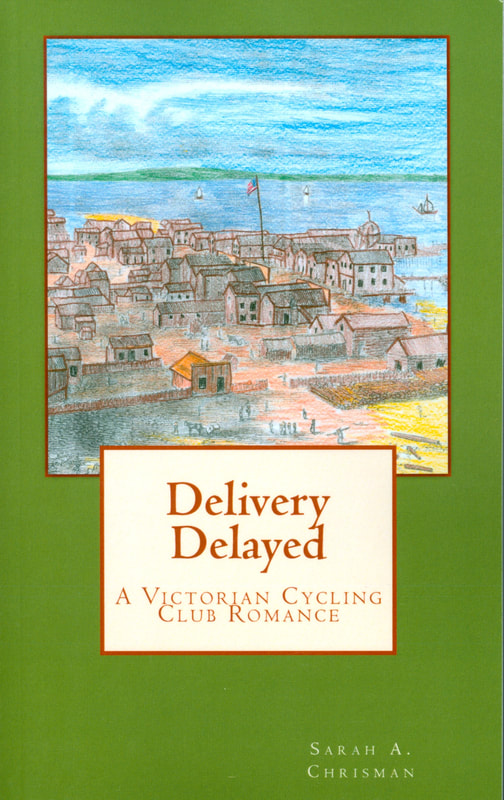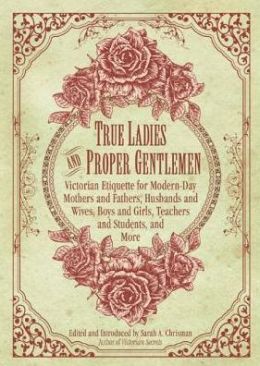Maintaining this website (which you are enjoying for free!) takes a lot of time and resources.
Please show your support for all our hard work by telling your friends about Sarah's books —and by buying them yourself, too, of course!
Historical Article
Woman's Work For Woman
Exerpted from Good Housekeeping June 22, 1889. p. 93
A most promising woman's exchange, the United Worker's and Woman's Exchange, at Hartford, Ct., has its quarters at 271 Main street. The exchange keeps 10 per cent. of the sales for its necessary expenses and pays 90 per cent. to the poor woman who has made the needlework, the cake, the preserves, the caramels, or whatever the article may be. How great a work has been and can be done by these exchanges in Boston and New York. The latter began business in April, 1878, and has gradually expanded its sales, both in variety and amount, until now they are immense. The cake and preserves alone sell for $12,000 a year, and in all departments the consignors number 35,000. A great problem of the exchanges is to teach women to help themselves. It is discovered that many women possess undeveloped taste and capability of which they are unaware; these women are put to different tests to hit upon the right thing. A destitute woman who presented herself to the exchange one day could think of nothing that she had ever made that would sell except old-fashioned molasses candy that she used to make for her children. Her first trial resulted in candy that was snapped up at a good price, and now two delivery wagons are kept busy delivering goods in the domestic department, including candies, preserves, and other foods.
The New York exchange brags that not at Delmonico's or our best fancy groceries can you get such scalloped oysters, such salads, such delicious brandied peaches and preserved gages. Dainty, cleanly fingers do this work. When you buy chicken broth or calves' foot jelly you can see a white-haired, aristocratic old lady, who stirs and strains without loss of dignity that she may keep a roof over the head of her invalid husband. The preparer of scalloped oysters nets $20 a week during the season, and the same amount or more is made by the woman whose specialty is bouillon. The brandied peaches sell for $1.50 a quart and the materials cost only about 70 cents. The brown-haired, hazel-eyed maiden who makes delicious pound and chocolate cake, has earned as much as $940 a year, which has enabled her to maintain and soothe the sufferings of a father out of work and health. There are two ladies who earn in cake and roll making over $500 each year. One is educating a younger brother and a sister, and the other is paying the expenses of her mother in a private hospital. A bright-eyed girl who invented a puzzle and who makes it at a cost of seven cents for materials, gets 25 cents for it and pays the doctor's bills of her crippled little brother. From $12 to $25 a dozen is paid for small doylies of the finest linen; they have been drawn to resemble delicate lace and are marvels of handiwork.
Orders are taken for any sort of fine sewing. That the art of needlework survives the ravages of the sewing-machine may be seen in the thousand exquisitely made articles for the baby's outfit and the bride's trousseau. A fashionable woman, not long ago, gave an order for a dozen old-fashioned night-caps, to be made by hand, the price being no object. A consignor who has had rheumatism so severely as to be unable to leave her chair, gets nearly $500 a year for making infants' slips.
The great idea of the charity that underlies these woman's exchanges is self help. One kind of charity helps others in such a way as to make them helpless; either the consequences of their ills are shouldered by the charitable, or no opportunities to labor are offered. The other and true kind is to provide those who are not absolutely helpless with the means and the opportunities to produce something or perform some service, and this is the field of the woman's exchange.
Back to Historical Articles Index
If you liked this article you might also enjoy these:
A Fortune Found In A Pickle Jar (Fiction—1889)
A Man in the Kitchen: The Difference Between A "Betty" And the Other Kind (1889)
An Old Maid's Paradise (1889)
A Woman Without Cares or Children (1889)
Individuality and Equality (1894)
Woman's Cycle (1896)
Woman's Exchanges as Training Schools and Markets for Work (1894)
Women Inventors (1897)
***
A Fortune Found In A Pickle Jar (Fiction—1889)
A Man in the Kitchen: The Difference Between A "Betty" And the Other Kind (1889)
An Old Maid's Paradise (1889)
A Woman Without Cares or Children (1889)
Individuality and Equality (1894)
Woman's Cycle (1896)
Woman's Exchanges as Training Schools and Markets for Work (1894)
Women Inventors (1897)
***
Back to Historical Articles Index
***
In a seaport town in the late 19th-century Pacific Northwest, a group of friends find themselves drawn together —by chance, by love, and by the marvelous changes their world is undergoing. In the process, they learn that the family we choose can be just as important as the ones we're born into. Join their adventures in
The Tales of Chetzemoka
***
Anthologies
True Ladies and
Proper Gentlemen
Victorian Secrets
|
This Victorian Life
|
For words of wit and advice sage,
I hope you'll like my author page!
History lessons, folks who dare,
Please do share it while you're there!
https://www.youtube.com/@Victorianlady
Thank you!
***
If you enjoy our website and appreciate what we do,
please consider making a cash donation.
Everything helps, and is appreciated!
Search this website:
***












